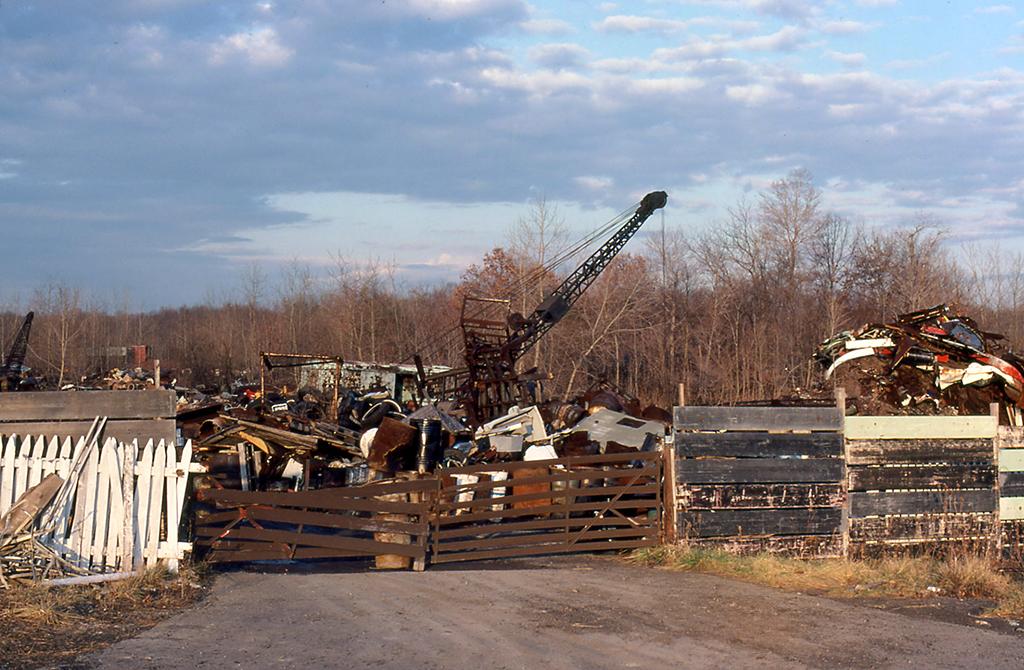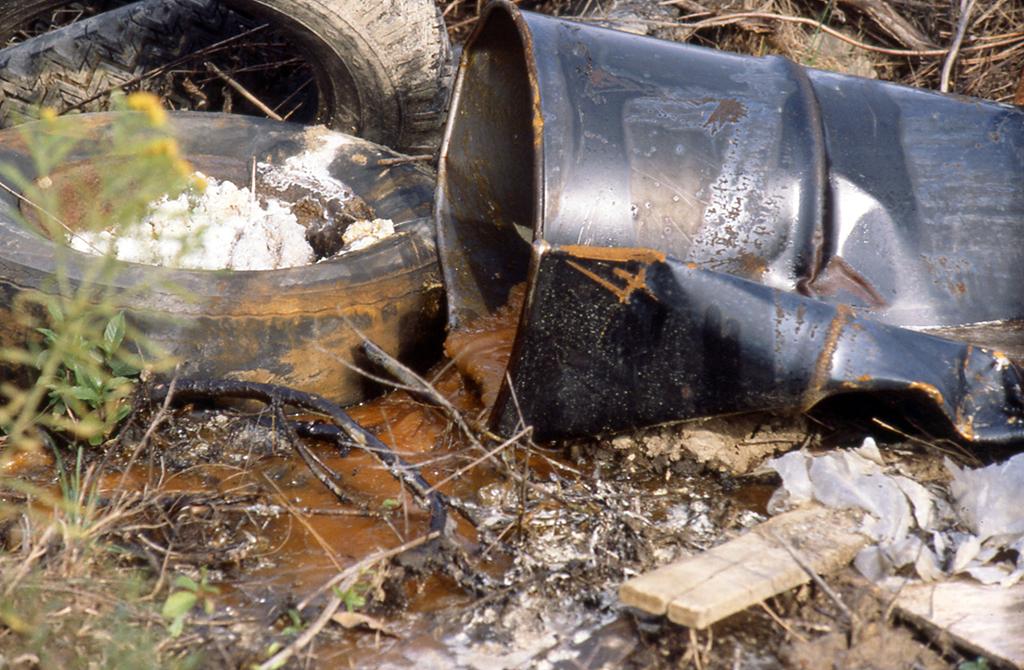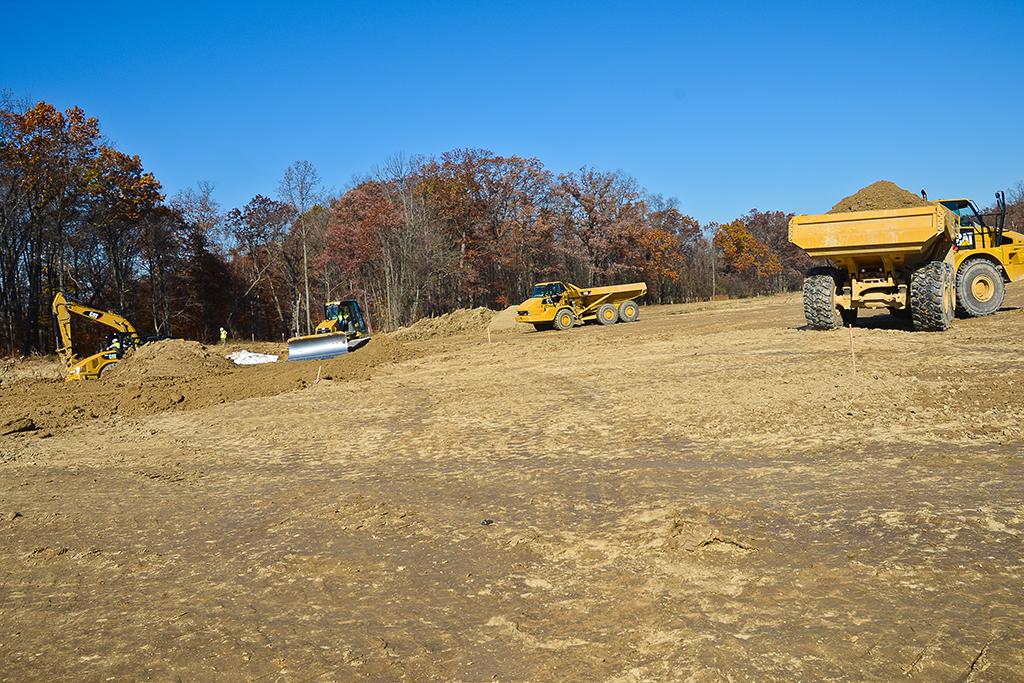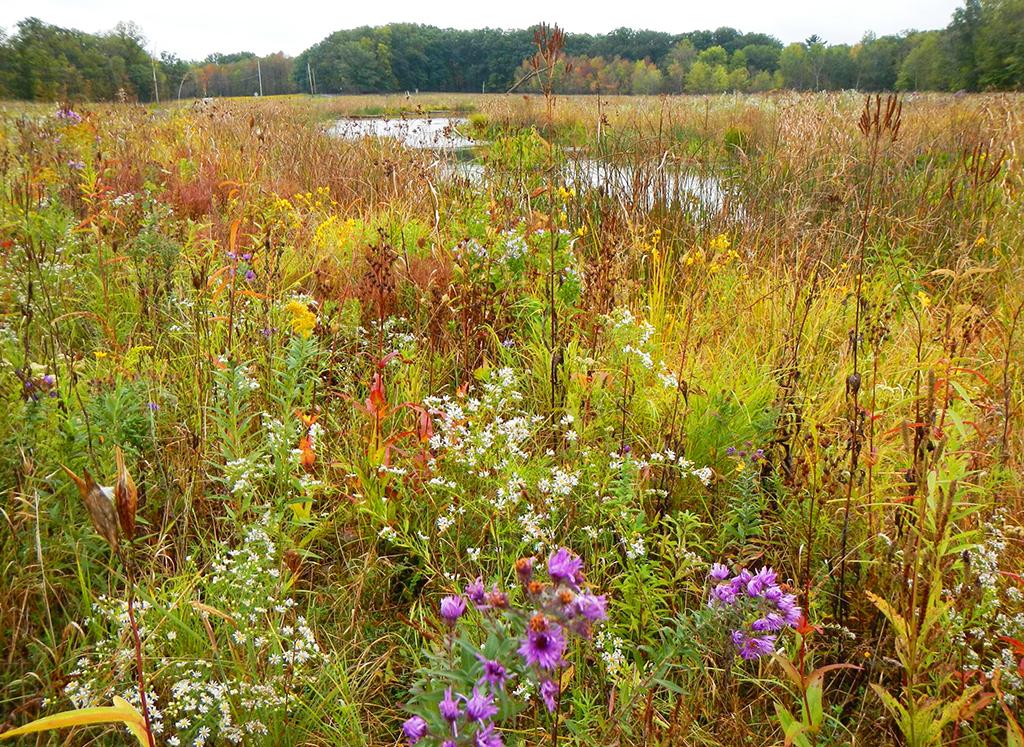Cuyahoga Valley National Park’s Krejci Wetland is a success story of concerned people and agencies diligently working to take a toxic wasteland and restore it to a landscape of forest, flower-filled meadows, and wetlands. What you see now when you visit this area within the park is vastly different from what it was in the 1970s.

Buyer Beware: the Krejci Dump in 1985, Cuyahoga Valley National Park / NPS file
From 1948 into the late 1970s, Krejci Dump, a 47-acre privately-owned salvage yard and waste disposal facility in Boston Township, existed in place of the park’s current greenspace. At that time, dumps were mostly unregulated and toxic materials from nearby cities, towns, and companies were burned at the site, or deposited in unlined pits, allowing the contaminants to seep into the soil.
In 1980, this polluted landscape was acquired by a young Cuyahoga Valley National Recreation Area, then just six years old, having been established in 1974 (this NRA didn’t become a national park until 2000). Although purchased in 1980, control wasn’t transferred to the National Park Service until 1985, which is around the time the toxicity of the site became apparent. Rangers experienced headaches and rashes resulting from exposure to fumes, and at least one visitor became ill.

Barrels leaking red sludge at Krejci Dump ca 1985, Cuyahoga Valley National Park / NPS file
The Park Service requested the Environmental Protection Agency (EPA) to perform an analysis of the dumpsite.
According to the National Park Service:
Contaminants identified at the Site included polychlorinated biphenyls (PCBs), dioxin/duran, polyaromatic hydrocarbons (PAHs), pesticides, benzene, and numerous metals including cadmium, copper, and lead.
Discovery of these toxic chemicals and metals resulted an area closure to the public. Krejci Dump was ultimately designated a Superfund cleanup site.
The Department of the Interior’s Central Hazardous Materials Fund provided the park approximately $14.9 million dollars from FY 1994 – FY 2013. The federal government filed suit in 1997 pursuant to the Comprehensive Environmental Response, Compensation, and Liability Act (CERCLA) against the companies which had disposed their wastes at the site, including Ford Motors, 3M, Chevron, Chrysler, 3M, General Motors, among others.
The litigation was successful and approximately $24 million was eventually recovered from the responsible parties. With a settlement reached, cleanup began in earnest in 2005. Hazardous and non-hazardous materials, along with contaminated soils (from depths anywhere between 12 inches – 25 feet), were removed.

According to Wikipedia:
In the first 12 months of cleanup alone, 108,000 cubic feet (3,100 m3) of contaminated soil had been trucked out of the site.
The landscape was graded and reseeded using native plants, shrubs, and trees with the goal of restoring the terrain as closely as possible to its original makeup. Three acres of wetland and wet meadow habitats were restored. The National Park Service certified the work completed in December 2020 at a cost of over $50 million.

Wetland pools and sedge meadows ca 2015, Cuyahoga Valley National Park / NPS - Chris Davis
You can see the transformation take place through a series of images in Cuyahoga Valley National Park’s Krejci Dump and Restoration Photo Gallery.





